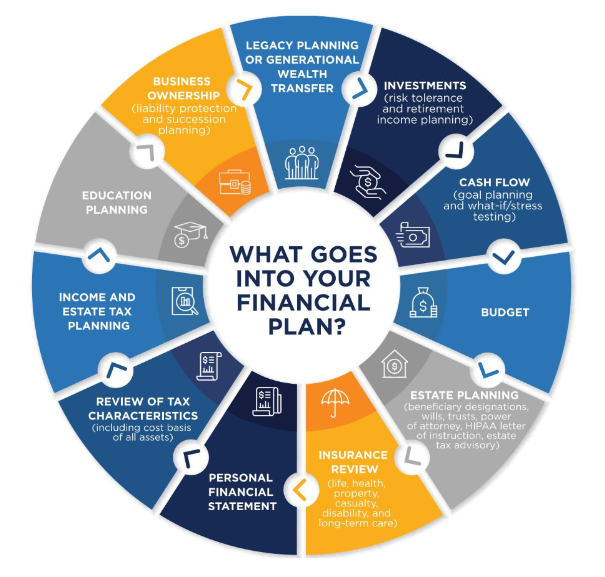What is your big, bold goal for retirement? And what legacy do you want to leave behind?
These are some of the key questions a financial advisor might ask when they are getting to know you as a client. Some people just want to be sure they won’t run out of money in retirement. But if you know you’re going to have enough, the question becomes, what will you do with the excess? What are you dreaming about that your financial plan and investment portfolio can help you achieve?
By gaining a holistic picture of your financial life, including your goals and risk tolerance, a financial advisor can customize your investments to meet your unique needs and desires. They do it through a combination of inputs that include financial planning insights, capital market acumen, and tax perspective. Behind the scenes, the financial advisor is constantly trying to position each client’s portfolio so that it stands to benefit from a multitude of potential future events.
What difference does it make if your portfolio is 60 percent stock and 40 percent bonds versus 80 percent stock and 20 percent bonds? Both portfolios might be equally likely to fund your retirement spending needs, but the difference may lie in what you leave behind. Or it could impact how much flexibility you will have to indulge in things like an 80th birthday cruise around the world, a large donation to charity, or the decision to fund a grandchild’s education.
“Imagine three buckets,” says Mark Feldman, CAPTRUST principal and head of tax services. “The first bucket is the one that’s going to care of you for the rest of your life, so those assets are going to be invested more conservatively. We call this the capital preservation bucket.”
“The second bucket – the liquid risk bucket – contains more volatile investments to help grow the portfolio. And the third bucket – the illiquid risk bucket – contains assets that will grow the portfolio but are not able to be accessed immediately,” says Feldman. “If you know your needs are taken care of with the capital preservation bucket, you become more risk tolerant with the excess.”
By separating your assets into buckets like these, a financial advisor can craft an investment portfolio that’s personalized to meet your goals.
Planning for Investment Goals
Investment planning is one part of financial planning. It involves portfolio construction, selection of investments, monitoring, rebalancing, and trading. It is the merging of investments with financial planning. What is key is for the financial advisor to have a complete picture of your financial activities, needs, and goals.
The Investment Engine
To create that holistic picture, your financial advisor will strategize your unique investment plan, evaluating available investment portfolios to find the ones that best align with your goals and risk tolerance.
Making Changes
Unlike the old days, when plans were reviewed only every three to five years, today’s technology allows advisors to make frequent updates and model different scenarios, like changes in spending, market environments, and tax rules. Your financial advisor will also help you edit your plan whenever there is a big shift in your financial situation, whether that means an unexpected gain, the selling of a business, or the loss of a family member.
You can also replan and recalculate when your feel your risk tolerance changing. For instance, if the market takes off, you can probably have a less risky portfolio and still achieve your life goals. Or you can choose to keep the pedal to the metal and leave a bigger legacy behind.







